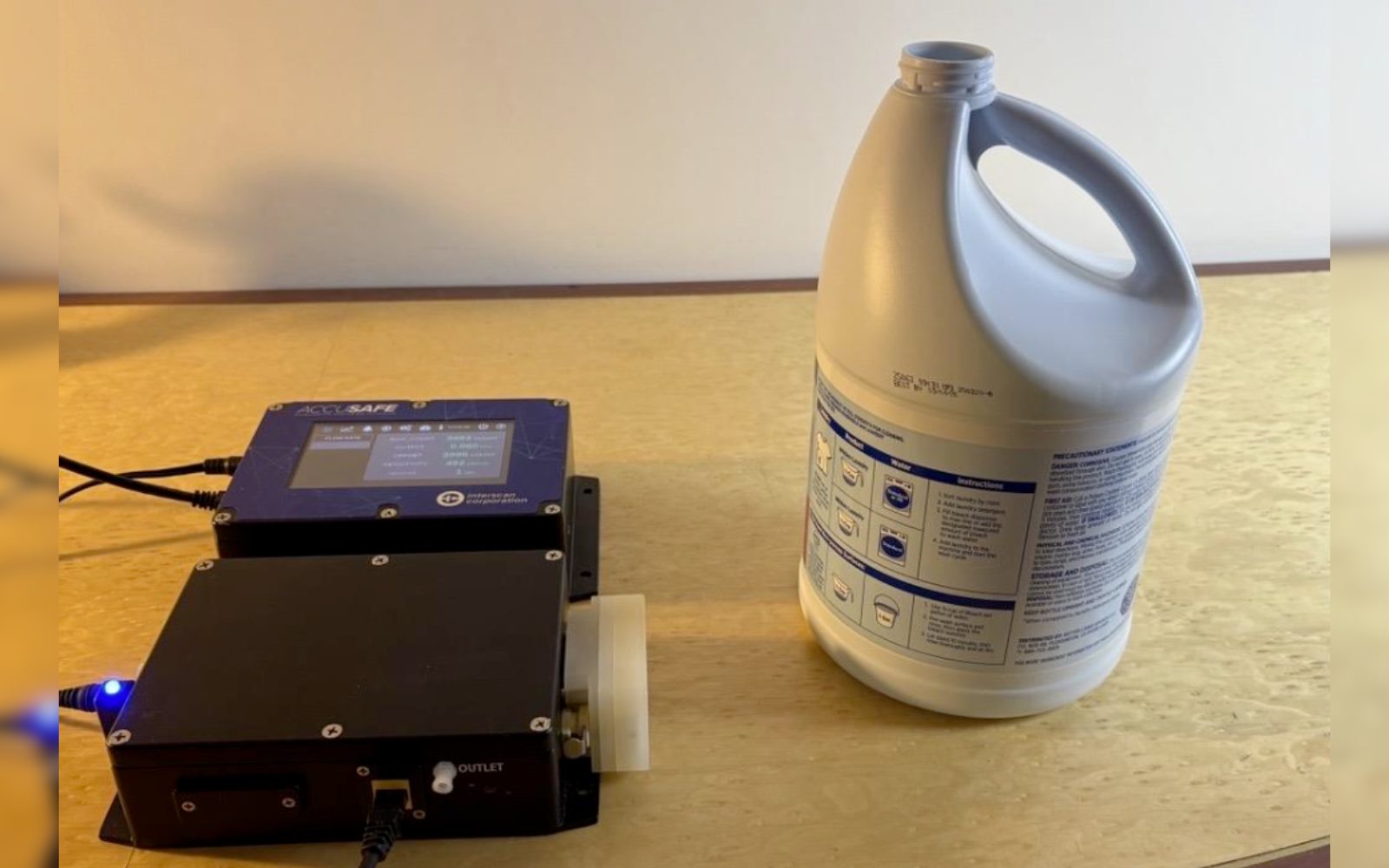Introduction
Household bleach, containing approximately 5–6% sodium hypochlorite, is widely used as a disinfectant and cleaning agent. When applied to surfaces, bleach releases a mixture of volatile compounds, including water vapor, hypochlorous acid (HOCl), and, under certain conditions, chlorine gas (Cl2). While the alkaline pH of commercial bleach typically limits Cl2 outgassing, the presence of acid, ammonia, or organic contaminants can substantially increase Cl2 vapor release.
This case study investigates the efficacy of the AccuSafe chlorine monitoring system in detecting vapor-phase chlorine emissions from bleach under real-world cleaning conditions. The results provide insights relevant to occupational health and safety concerns raised by employees working with cleaning products in confined spaces.
Objective
To evaluate the AccuSafe monitoring system’s ability to detect chlorine vapors generated from bleach in various application scenarios, including open containers, bleach-soaked materials, and cleaned surfaces, at different distances and time points.
Methods
Instrument: AccuSafe Chlorine gas monitor calibrated for a detection range of 50 ppb to 20 ppm and a sampling rate of 120ccm.
Test environment: Indoor room with an approximate volume of 2,600 cubic feet and limited ventilation.
Test conditions:
- Open bleach container (1 gallon):
- Positioned 10 ft from instrument inlet
- Positioned directly at instrument inlet
- Bleach-soaked paper towel:
- Placed on a table 10 ft from instrument inlet
- Surface cleaning test:
- Table (32 in × 17 in) wiped with bleach-soaked paper towel
- Measurements recorded immediately after cleaning and again after 45 minutes
Results
| Test Condition | Chlorine Concentration (ppm) |
| Open container near inlet | 0.020 ppm |
| Open container at 10 ft | 0.000 ppm |
| Paper towel at 10 ft | 1.25 ppm |
| Table surface, immediate (10 ft) | 1.67 ppm |
| Table surface, after 45 min (10 ft) | 0.660 ppm |
Discussion
The findings demonstrate that the AccuSafe monitoring system effectively detects chlorine vapors emitted from surfaces treated with bleach, even at a distance of 10 ft and up to 45 minutes post- application. Several key points emerge from the data:
• Minimal emissions from open containers: An open gallon of bleach produced only baseline fluctuations (~20 ppb), even when placed near the inlet, indicating that bulk bleach releases negligible Cl2 gas under normal alkaline conditions.
• High emissions from treated surfaces: Both the bleach-soaked paper towel and the freshly cleaned table surface generated significant chlorine vapor concentrations (1.25–1.67 ppm), exceeding OSHA’s permissible exposure limit (PEL) ceiling of 1 ppm and the short-term exposure limit (STEL) of 1 ppm over 15 minutes.
• Prolonged emissions over time: Residual vapor from the cleaned surface remained detectable at 0.660 ppm after 45 minutes, underscoring the persistence of chlorine emissions in confined, low- ventilation environments.
These results suggest that larger surface areas, higher bleach volumes, or smaller confined spaces could produce substantially greater airborne Cl2 levels, heightening exposure risks for workers.
Conclusions
The AccuSafe system successfully detected chlorine vapor emissions from bleach-treated surfaces, providing a reliable means to monitor occupational exposure risks in real-world cleaning scenarios. Given the elevated levels measured even at a 10-ft distance and after extended time in a large room, this system offers critical value in maintaining worker safety, particularly in confined or poorly ventilated spaces.
Recommendations
• Extend testing to larger surface areas and confined rooms.
• Perform time-course monitoring over multiple hours to evaluate long-term emissions.
• Implement adequate ventilation in areas where bleach is used frequently.
• Provide employee training on the potential hazards of bleach use and vapor accumulation.
Next Steps
We recommend evaluation of chlorine vapor monitoring across a broader range of facilities and conditions. Incorporating air monitoring alongside enhanced ventilation protocols can help mitigate health risks associated with bleach use in the workplace.


